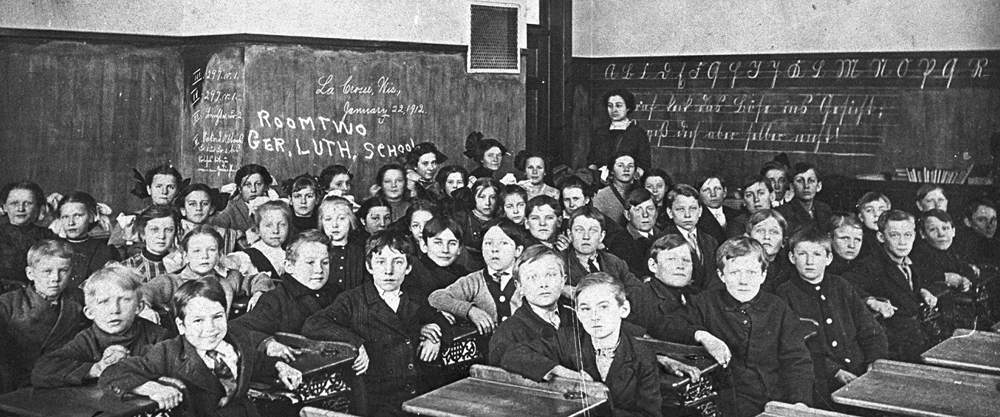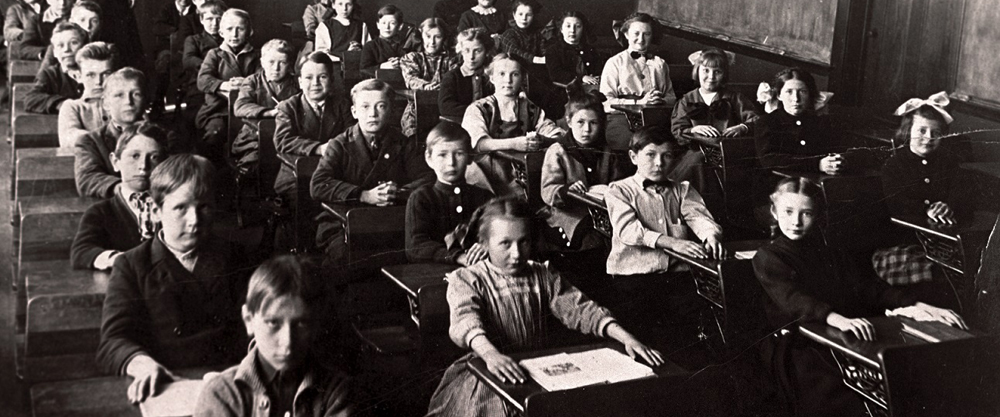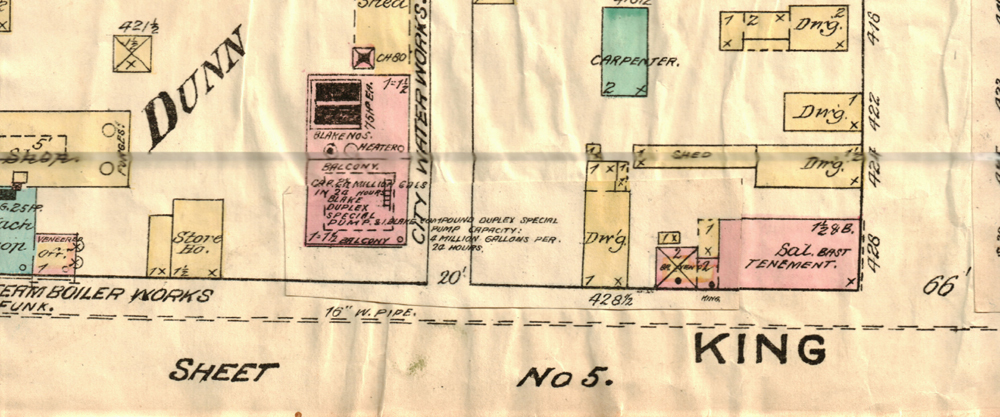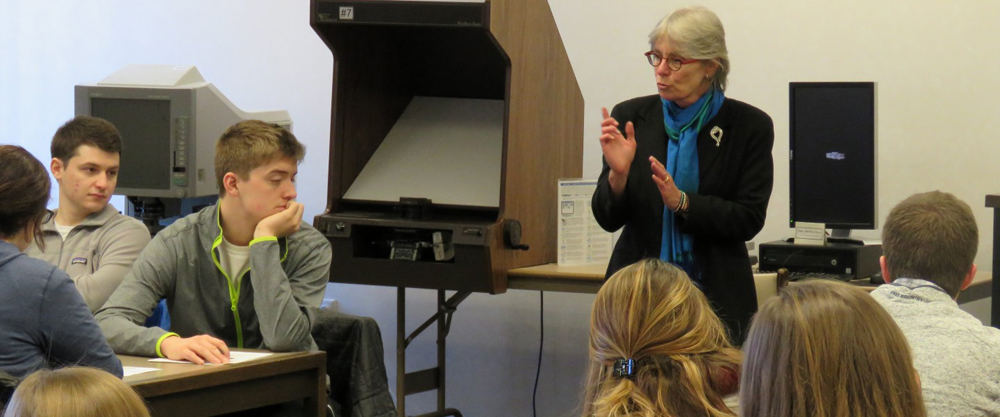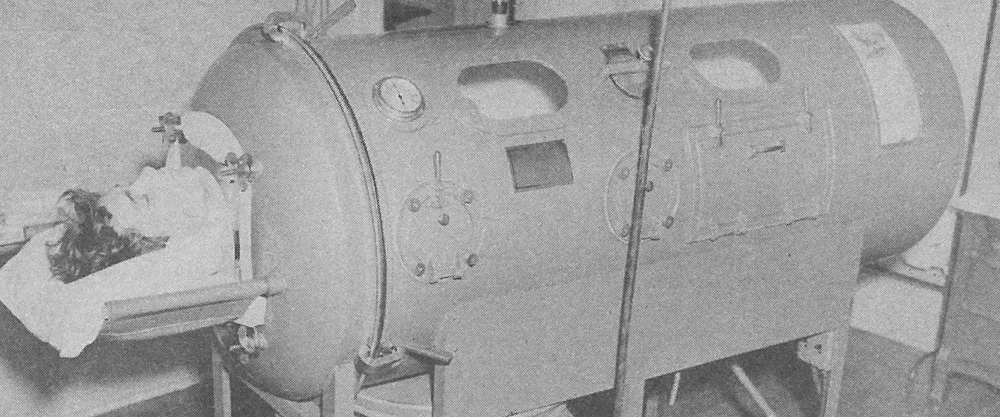LA CROSSE HISTORY
unbound
THE LA CROSSE AREA'S HISTORY, DIGITIZED
Local Ties for Your Project

Unbound Collections
- Browse All Titles
- Formats
- General Histories
- Area Genealogy
- Accidents & Disasters
- Agriculture
- Archaeology
- Architecture
- Arts & Music
- Businesses & Industries
- Cemeteries
- Economy
- Education & Schools
- Events & Festivals
- Government
- Health & Healthcare
- Historic Sites
- Literature
- Military & War
- Natural Environment
- Neighborhoods
- Organizations
- Parks
- Peoples & Cultures
- Politics
- Press & News Media
- Religious Groups
- Sports & Recreation
- Transportation
Local Ties for Your NHD Project
Many national and global topics can be connected to local themes. See the examples below to get an idea of how broad topics can be narrowed locally. Contact the archives if you want to know if your broad topic can be connected to the La Crosse area or western Wisconsin.
Below are some examples of how to connect your broad topic to a local person, event, or issue.
Civil War
Local Civil War General Cadwallader C. Washburn was the 11th Governor of Wisconsin. He invested in many La Crosse businesses and sawmills. He later became a co-founder of the company that is known today as General Mills.
Temperance and Women's Rights
Famous suffragists like Susan B. Anthony, who worked on national campaigns for white women's rights, visited La Crosse to speak. Some surrounding communities had local chapters of anti-alcohol groups, such as the Women's Christian Temperance Union (WCTU) and Independent Order of Good Templars, in favor of Prohibition. Sparta, WI had a very active chapter of WCTU.
One Wisconsin woman who worked for the suffrage movement was Lutie Stearns. Lutie was a teacher and a librarian who lived in Milwaukee. She helped establish hundreds of libraries and helped build the foundation for the library systems we see today, including the La Crosse County Library System. Lutie was known to fight for human rights and spoke out against white suffragists who fought to silence Black women.
Prohibition
Many of La Crosse's breweries and taverns shut down during Prohibition. Though many converted to making and selling soda, there were several raids at La Crosse businesses who were suspected for selling liquor illegally.
Unions and the Labor Movement
Employees from local industries organized unions for better working conditions and pay. A few companies that had strikes were Trane, Wisconsin Pearl Button Company, La Crosse Rubber Mills, and Auto-Lite.
Colonizing in the Americas
There have been many waves of immigrants and migrants to La Crosse since it became an established city in the 1850s.
Many early colonizers to the La Crosse area arrived on the Mississippi River by steamboat. Later this changed to railroads, which began to criss-cross the U.S. by the late 1800s.
Though most La Crosse area immigrants were of European or Euro-American descent, many African Americans moved here during the mid and late 1800s. Several Syrian and Lebanese immigrants also settled in La Crosse during the 1890s-1910s.
In the 1980s, La Crosse became home to many Hmoob (Hmong) and Cuban refugees who came into the area after U.S. involvement in Vietnam, Laos, and Cuban political affairs.
Andrew Jackson's 1830 Indian Removal Act
This act allowed for the continued genocide and oppression of the nation's Indigenous populations for years to come.
One example: In 1848, many local Ho-Chunk were forcibly removed from Wisconsin, and La Crosse was one of the rendezvous points where Ho-Chunks were forced onto steamboats to travel north. The U.S. Federal Government hired Mississippi River steamboat lines to carry hundreds of Ho-Chunk people to the Long Prairie Reservation (north of St. Paul, MN) where they were to live under guard by armed forces. Despite these conditions and five other removal attempts, many Ho-Chunk were able to escape and make it back to their homelands across Wisconsin.
Sports History
In 1904, George Coleman Poage became the first African American in history to win an Olympic medal. He grew up in La Crosse and was a graduate of Central High School, salutatorian of his class in 1899.
Polio Epidemic and Vaccinations
La Crosse County was one of the first places in the nation that tested polio vaccines, which saved thousands of lives after an epidemic in the early 1950s.
Civil Rights and Counterculture Protests
There are few records showing Civil Rights protests in the La Crosse area. However, there are materials that show UWL students and La Crosse residents protesting the Vietnam War. There is also evidence in records like the Central High School student newspaper that high school students were influenced by the nationwide activism and participated in community education around Civil Rights as much as they could.
1980 Mariel Exodus
Fort McCoy was one of five national detention centers where many Mariel Exodus refugees were held before being relocated into homes and communities around the U.S.
The Mariel Exodus greatly impacted the La Crosse community.
World War II
One of the most famously decorated units in U.S. military history was the 100th Infantry Battalion during WWII, who trained at Camp McCoy (which is now called Fort McCoy) near Sparta, WI.
Before Japan attacked the U.S. Naval Base Pearl Harbor in December of 1941, there were more than 5,000 second-generation Japanese-Americans serving in the U.S. military. After the attack on Pearl Harbor, anti-Japanese sentiment grew and these Americans were discharged from their service. However, by May 1942, many of these discharged men had shown dedication towards the U.S. military on countless occassions, and it was recommended by an Army General to establish a battalion to bring 1,300 men back into service, which would become the 100th Infantry Battalion. These men shipped out to Camp McCoy in June 1942, where they trained for seven months.
Can you think of how your broad topic might have a local connection?
Read through the Collections listed in the left side menu. Click on a subject that matches something you're interested in and check if there are any resources that connect your topic to the La Crosse area.
Questions about using any of these examples listed above in your research? Contact the Archives.

